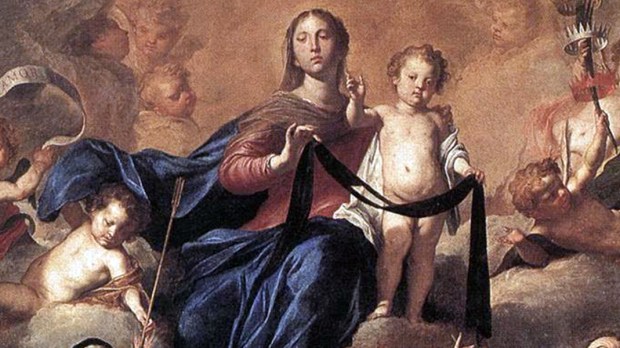There is a place near where the prophet Elijah lived that is one of the most “biblical” places on earth. It is 1,742 feet above sea level, hovering high over the coast of the Mediterranean. It was here where Elijah prayed to God, asking Him to save Isreal from the onslaught of an ongoing drought.
He prayed and prayed and asked his servant to go up the mountain and look for signs of rain. On the seventh try, Elijah’s servant returned, exclaiming, “Behold, a little cloud that looked like a man’s foot rose from the sea.” Soon after, torrential rains fell upon the parched land. The crops grew, the animals thrived, and the people were saved. The place was called Mount Carmel.
Elijah saw the cloud as the symbol mentioned in the prophecies of Isaiah (Isaiah 7:14) Therefore, the Lord Himself will give you a sign: “The Virgin shall be with Child, and bear a Son and name Him Immanuel.”
Over the centuries, many hermits lived on Mount Carmel, and following Elijah’s example continually prayed for the arrival of the much-awaited Virgin who would become the mother of the Messiah. The very beginnings of the Carmelite Order can be traced back to Elijah and the hermits of Mount Carmel. Many consider these hermits to be the first Carmelites.
The hermits living on Mount Carmel during the 12th and 13th centuries were the first Carmelites as we know the order today. They built a chapel dedicated to the Blessed Virgin, whom they called the Lady of the Place, or the Star of the Sea.
In the 13th century, Simon Stock was on a pilgrimage to the Holy Land. He had been elected as the sixth superior general of the Carmelites.
He joined a group of hermits on Mount Carmel. On Sunday, July 16, 1251, Simon Stock was kneeling in prayer when Our Lady appeared to him. The Blessed Mother said to Simon, “This shall be the privilege for you and for all the Carmelites, that anyone dying in the habit shall be saved.”
It is said that the Blessed Mother gave a scapular — a small, simplified version of the sleeveless apron worn over the Carmelite habit — to Simon Stock. It became known as the Brown Scapular, to distinguish it from other sacramentals promoted by members of religious orders. Six months later, on January 13, 1252, the order received a letter of protection from Pope Innocent IV, defending them from any harassment or denial of this event.
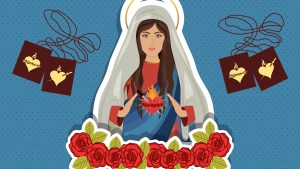
Read more:
Is the brown scapular just a Catholic “lucky charm”?
What is known as the Sabbatine Privilege is attached to the wearing of the Brown Scapular. The name Sabbatine Privilege comes from a papal bull issued by Pope John XXII on March 3, 1322. According to the Holy Father, the Blessed Virgin gave him the following message in a vision that was directed to all those who wear the Brown Scapular. “I, the Mother of Grace, shall descend on the Saturday (Sabbath) after their death and whomsoever I shall find in Purgatory, I shall free, so that I may lead them to the holy mountain of life everlasting.”
Based on Church tradition, three conditions must be fulfilled to obtain the benefits of this Privilege and the Scapular: (1) Wear the Brown Scapular; (2) Observe chastity according to one’s state in life; (3) Pray the Rosary.
To receive the spiritual blessings associated with the Scapular, one should be formally enrolled in the Brown Scapular by either a priest or a layperson who has been given the authority to enroll. Once enrolled, no other scapular needs to be blessed before wearing. The blessing and imposition are attached to the enrolled person for life.
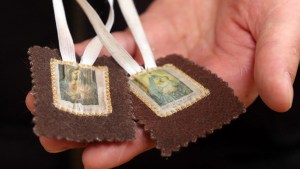
Read more:
This priest was saved from a bullet by wearing his Brown Scapular
The feast day of Our Lady of Mount Carmel is July 16, the same day she appeared to Simon Stock. Interestingly, Simon Stock was never officially canonized, though he has been venerated by the Carmelites since 1564. And with Vatican approval, he has been given the feast day of May 16. He is also called St. Simon Stock and churches and schools have been named after him.
On the 750th anniversary of the bestowal of the Brown Scapular, Pope St. John Paul II said, “Over time this rich Marian heritage of Carmel has become, through the spread of the Holy Scapular devotion, a treasure for the whole Church.”
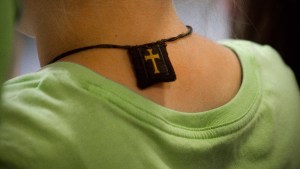
Read more:
This is why Satan hates the Brown Scapular
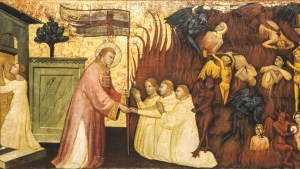
Read more:
The saints tell us what Purgatory is actually like
See this slide show to learn about recognizing habits, including those of the Carmelites:
